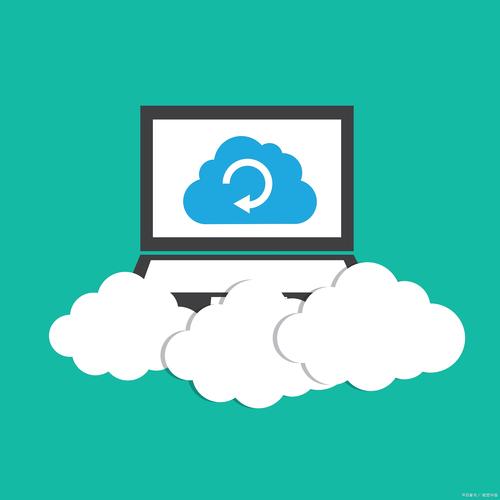云核算 英文,Introduction to Cloud Computing
时间:2024-12-22阅读数:10
云核算在英文中被称为 Cloud Computing。
Introduction to Cloud Computing
Cloud computing has revolutionized the way businesses and individuals access and manage data and applications. It refers to the delivery of computing services over the internet, allowing users to access resources such as servers, storage, databases, networking, software, analytics, and intelligence on-demand. This article delves into the basics of cloud computing, its benefits, challenges, and the future of this transformative technology.
What is Cloud Computing?
Cloud computing is built on the concept of virtualization, where the physical resources are abstracted and presented as logical resources. This allows for greater flexibility, scalability, and efficiency in managing IT infrastructure. The cloud can be categorized into three main types: public, private, and hybrid clouds.
Public Cloud

Public clouds are owned and operated by third-party service providers, such as Amazon Web Services (AWS), Microsoft Azure, and Google Cloud Platform. These clouds offer services to a wide range of customers over the internet. Public clouds are cost-effective, as users only pay for the resources they consume, and they provide high scalability and reliability.
Private Cloud

Private clouds are dedicated to a single organization and can be hosted on-premises or by a third-party provider. They offer more control and security, as the infrastructure is not shared with other organizations. Private clouds are suitable for businesses with specific compliance requirements or those that handle sensitive data.
Hybrid Cloud
Hybrid clouds combine the benefits of both public and private clouds. They allow organizations to leverage the scalability and cost-effectiveness of public clouds while maintaining control over sensitive data and applications in a private cloud environment. This approach provides flexibility and ensures that critical workloads are protected.
Benefits of Cloud Computing
Cloud computing offers numerous benefits, including:
Cost savings: By eliminating the need for physical infrastructure, businesses can reduce capital expenditures and operational costs.
Scalability: Cloud resources can be easily scaled up or down based on demand, allowing businesses to respond quickly to changing requirements.
Reliability: Cloud providers typically offer high availability and disaster recovery solutions, ensuring that services are always accessible.
Flexibility: Users can access cloud services from anywhere, using any device with an internet connection.
Innovation: Cloud computing enables businesses to experiment with new technologies and services without significant upfront investment.
Challenges of Cloud Computing
Despite its benefits, cloud computing also presents several challenges:
Security concerns: Storing data and applications in the cloud raises concerns about data breaches and unauthorized access.
Vendor lock-in: Organizations may become dependent on a specific cloud provider, making it difficult to switch providers or migrate to an on-premises solution.
Complexity: Managing multiple cloud services and integrating them with existing IT infrastructure can be complex and time-consuming.
Compliance and regulatory issues: Businesses must ensure that their cloud services comply with industry regulations and standards.
The Future of Cloud Computing
The future of cloud computing is expected to be characterized by the following trends:
Edge computing: As more devices become connected, edge computing will become increasingly important. This involves processing data closer to the source, reducing latency and bandwidth requirements.
Artificial intelligence and machine learning: Cloud providers will continue to integrate AI and ML services, enabling businesses to leverage advanced analytics and automation.
Hybrid and multi-cloud strategies: Organizations will increasingly adopt hybrid and multi-cloud strategies to optimize performance, cost, and compliance.
Security and privacy: As cyber threats evolve, cloud providers will focus on enhancing security and privacy features to protect customer data.
Conclusion

Cloud computing has become an integral part of the modern IT landscape, offering numerous benefits and opportunities for businesses and individuals. While challenges exist, the continuous advancements in technology and the evolving cloud ecosystem are paving the way for a more efficient, secure, and innovative future.
本站所有图片均来自互联网,一切版权均归源网站或源作者所有。
如果侵犯了你的权益请来信告知我们删除。邮箱:[email protected]
猜你喜欢
-

区块链新闻网,区块链技能助力数据要素流转,上海移动引领新篇章
以下是几个专业的区块链新闻资讯渠道,您能够依据自己的需求挑选适宜的网站进行阅读:1.ODAILY:这是一个专业的区块链媒体渠道,供给全面、深度的区块链技能资讯...
2025-01-07其他 -
开源协同作业体系,助力企业高效协作与立异开展



1.O2OA:特色:O2OA是一个全代码开源的企业运用定制化开发渠道,依据J2EE分布式架构,支撑移动作业和智能作业,适用于企业OA和协同作业类信息化体系的建造和开发。功用模块:包含流程渠道、门户渠道、信息渠道、数据渠道和服务渠道,支撑考勤办理、信息办理、会议办理、日程办理、便签办...。
2025-01-07其他 -
区块链数据剖析,技能革新与商业使用



1.买卖行为剖析:剖析区块链上的买卖数据,包含买卖量、买卖频率、买卖金额等,以了解市场动态和用户行为。2.智能合约剖析:剖析智能合约的布置、履行和交互状况,以评价智能合约的安全性和功率。3.网络拓扑剖析:剖析区块链网络的结构,包含节点散布、衔接联系等,以了解网络的稳定性和安全性。4.地址行为...。
2025-01-07其他 -
开源节省降本增效作业施行方案



开源节省、降本增效是企业在竞赛剧烈的商场环境中进步效益、增强竞赛力的要害办法。以下是拟定开源节省、降本增效作业施行方案的一些主张:一、清晰方针与方向1.拟定清晰的开源节省、降本增效方针,如下降本钱份额、进步出产功率、添加商场份额等。2.确认施行方案的方向,包含优化出产流程、进步职工本质、下降能源...。
2025-01-07其他 -
前海开源杨德龙,2025年A股商场展望与出资战略
杨德龙,男,汉族,中共党员,1981年6月生于河南商丘,现寓居于深圳。他现任前海开源基金办理有限公司履行总司理,具有10年基金从业阅历。杨德龙于2006年7月结...
2025-01-07其他